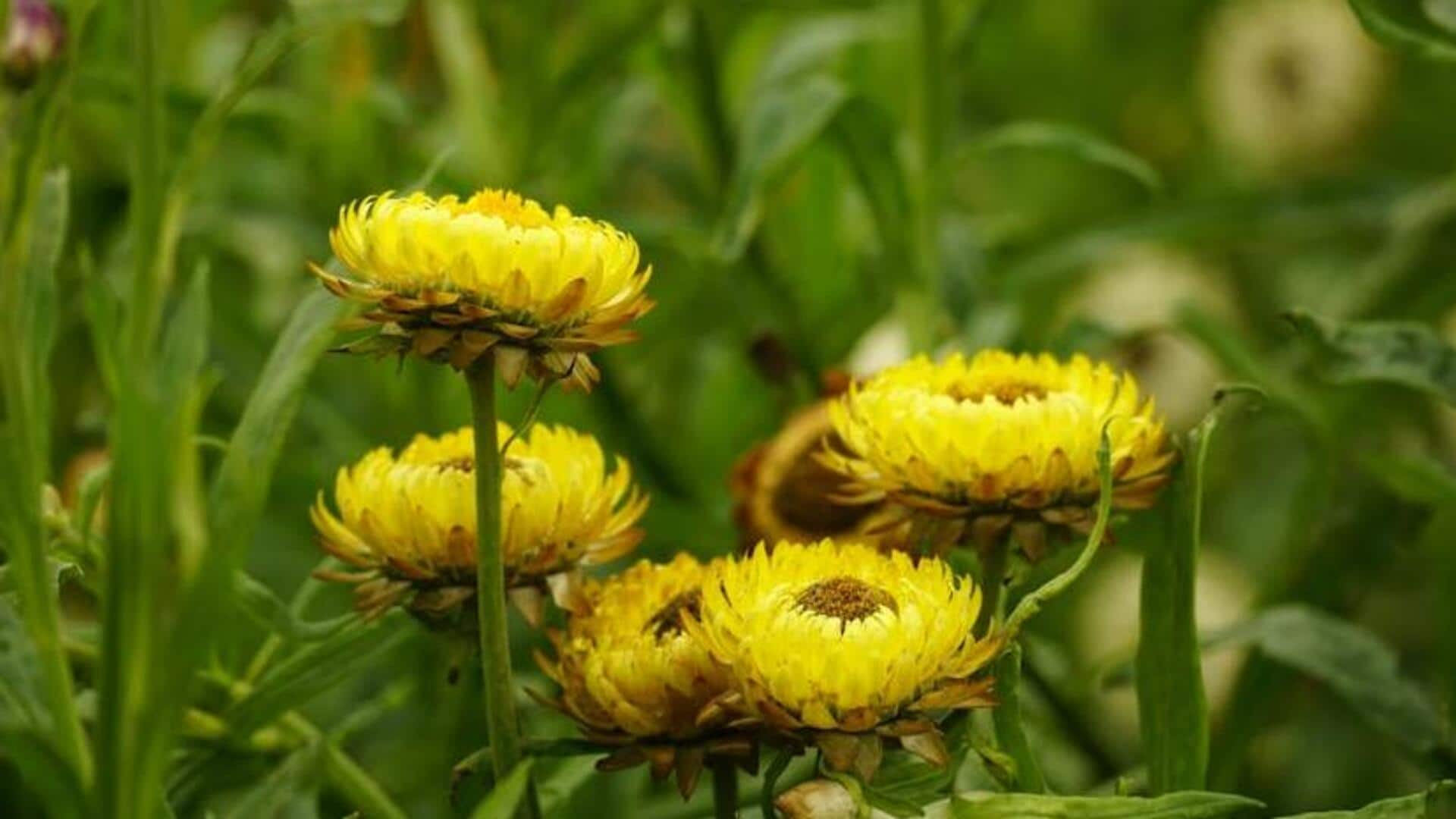
Growing delightful strawflowers in dry soil beds
What's the story
Strawflowers are a gardener's dream: their brilliant colors and papery texture bring life to any garden, but they truly shine in dry soil. These resilient blooms flourish where others struggle, making them a perfect pick for gardeners grappling with dry conditions. Read on to learn how to grow strawflowers like a pro in your dry soil beds!
Variety
Selecting the right variety
There are many types of strawflowers to choose from, each offering a unique range of colors and growth habits. For dry soil conditions, you should choose varieties that are specifically drought-tolerant. Opt for species that are native to dry environments, as they will be more suited to the low moisture levels of your garden bed.
Soil prep
Preparing your soil bed
Although strawflowers can tolerate infertile soil, taking the time to prepare your bed will greatly improve their performance. Work a large quantity of compost into the top six inches of soil to enhance its structure and fertility. While they like it dry, making sure the soil drains well is crucial to avoid root rot during periods of heavy rain.
Planting
Planting techniques
To ensure optimal growth, sow strawflower seeds directly into your prepared bed following the last frost date in your area. Space seeds approximately six inches apart and cover lightly with soil. Strawflowers require full sun to thrive, so select a location that receives a minimum of six hours of direct sunlight each day. Water gently after planting until seedlings establish.
Watering
Watering wisely
Strawflowers are extremely drought-tolerant once established and can thrive with little watering, making them perfect for dry gardens. Remember, overwatering is more harmful to these drought-tolerant plants than under-watering. Water deeply but infrequently to encourage strong root growth and conserve water by minimizing loss due to evaporation. Early morning is the best time for this. This way, the plants get the water they need without you wasting any.
Maintenance
Ongoing care and maintenance
To ensure your strawflower plants remain vibrant and continue to produce blooms throughout the season, make a habit of removing spent flowers. This not only encourages the growth of new blooms but also prevents unwanted self-seeding if you're aiming to manage their proliferation in your garden. Plus, a light layer of mulch around plants aids in moisture retention during particularly dry spells, while still allowing for adequate drainage.